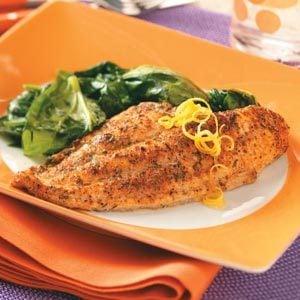Baked Herb Catfish
Prep: 20 min. Bake: 15 min.
4 servings
Updated: Aug. 18, 2023
Spice up August, National Catfish Month, with these well-seasoned fillets. A healthy twist on batter-fried catfish, the baked entree cuts the calories and saves the flavor. —Kathy Giannone, West Henrietta, NY



















